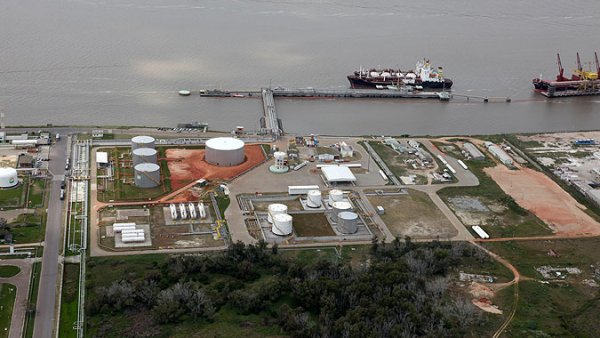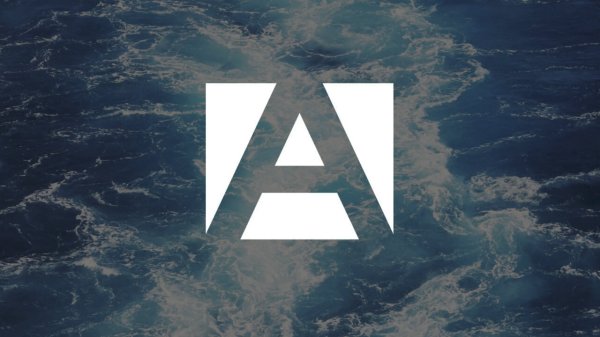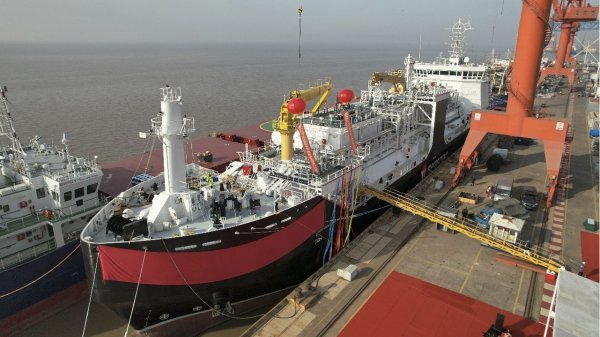GTT highlights subsea LNG bunkering solution in H1 review
Gravity Based System consists of a concrete chamber and a membrane containment tank designed by GTT.
Gaztransport & Technigaz (GTT), an engineering company specialised in the design of membrane containment systems for the transportation and storage of liquefied gases, has highlighted its subsea storage solution for LNG bunkering in its financial review of the first six months of 2017.
Dubbed the Gravity Based System (GBS), the bunkering station consists of a concrete chamber and a membrane containment tank designed by GTT.
The GBS, which was presented in April at the Gastech Exhibition & Conference, sits on the seabed and can be installed in a port or isolated area and requires no additional infrastructure. This reduces installation costs while limiting the environmental impact.
As at June 30, GTT's order book stood at 88 units, which included one LNG bunker barge.
During the first half of 2017, GTT posted a net income of EUR 61.2 million compared to EUR 60.5 million the previous year.
Operating profit was EUR 74.6 million, up from EUR 73.7 million. Revenue dipped from last year's figure of EUR 116.9 million to EUR 111.3 million.
As previously reported, GTT also forms part of a joint industry project that is looking to develop an LNG-fuelled boxship with no engine room. The Piston Engine Room Free Efficient Containership (PERFECt) is an electric-driven 20,000-TEU ultra large container vessel (ULCV) with an LNG-fuelled combined cycle gas and steam turbine (COGES) electric power plant.
Dubbed the Gravity Based System (GBS), the bunkering station consists of a concrete chamber and a membrane containment tank designed by GTT.
The GBS, which was presented in April at the Gastech Exhibition & Conference, sits on the seabed and can be installed in a port or isolated area and requires no additional infrastructure. This reduces installation costs while limiting the environmental impact.
As at June 30, GTT's order book stood at 88 units, which included one LNG bunker barge.
During the first half of 2017, GTT posted a net income of EUR 61.2 million compared to EUR 60.5 million the previous year.
Operating profit was EUR 74.6 million, up from EUR 73.7 million. Revenue dipped from last year's figure of EUR 116.9 million to EUR 111.3 million.
As previously reported, GTT also forms part of a joint industry project that is looking to develop an LNG-fuelled boxship with no engine room. The Piston Engine Room Free Efficient Containership (PERFECt) is an electric-driven 20,000-TEU ultra large container vessel (ULCV) with an LNG-fuelled combined cycle gas and steam turbine (COGES) electric power plant.

|
IMO approves pricing mechanism based on GHG intensity thresholds
Charges to be levied on ships that do not meet yearly GHG fuel intensity reduction targets. |
|
|
|
||

|
VARO Energy expands renewable portfolio with Preem acquisition
All-cash transaction expected to complete in the latter half of 2025. |
|
|
|
||

|
NYK trials biofuel in milestone coal carrier test
Vessel is used to test biofuel for domestic utility company. |
|
|
|
||

|
H-Line Shipping orders LNG bunkering vessel
Vessel with 18,000-cbm capacity to run on both LNG and MDO. |
|
|
|
||

|
How to engineer and manage green shipping fuels | Stanley George, VPS
Effective management strategies and insights for evolving fuel use. |
|
|
|
||

|
Swedish government bans scrubber wastewater discharges
Discharges from open-loop scrubbers to be prohibited in Swedish waters from July 2025. |
|
|
|
||

|
MAN Energy Solutions achieves 100% load milestone for ammonia engine
Latest tests validate fuel injection system throughout the entire load curve. |
|
|
|
||

|
Petrobras secures ISCC EU RED certification for B24 biofuel blend at Rio Grande
Blend consisting of 24% FAME is said to have been rigorously tested to meet international standards. |
|
|
|
||

|
Stolt-Nielsen to fully control Avenir LNG with acquisition
Share purchase agreement to buy all shares from Golar LNG and Aequitas. |
|
|
|
||

|
Bureau Veritas supports launch of CIMC SOE's LNG bunkering vessel
Handover of Seaspan Energy's cutting-edge 7,600-cbm vessel completed. |
|
|
|
||
Related Links
- · PERFECt phase II readies LNG-fuelled boxship with no engine room for the order book [Insights]
- · GTT signs LNG barge training programme [Insights]
- · GTT signs LNG membrane containment system agreement [Insights]
- · Conrad net loss 'primarily due to' LNG bunker barge [Insights]
- · France [Directory]

